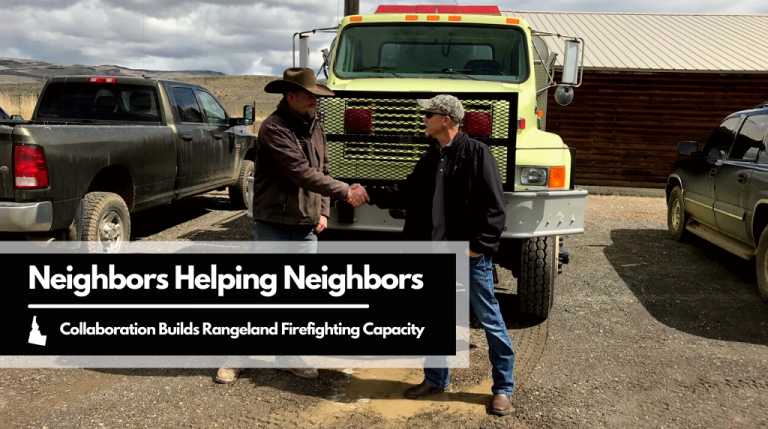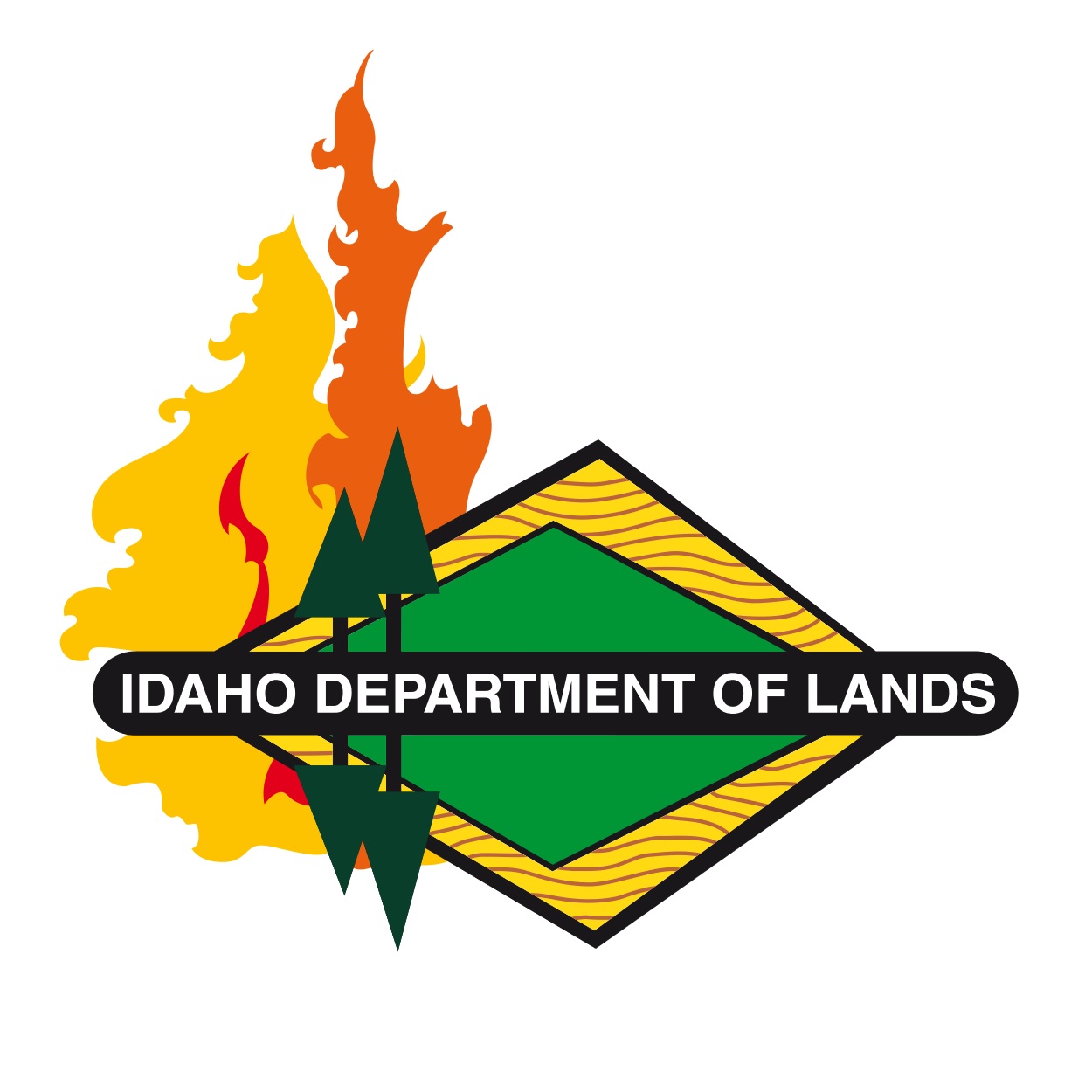
What are Rangeland Fire Protection Associations?
Rangeland Fire Protection Associations (RFPAs) empower local landowners to protect their own property and their neighbors’ where fire protection services are limited or not available. By responding quickly, fires on the range can be kept small. RFPAs can also respond to fires nearby that would otherwise take time for other firefighting agencies to reach.
Rangeland Fire Protection Associations operate under the concept of “neighbors helping neighbors” with support, including start-up funding, training, and refurbished equipment provided through IDL, BLM, and other partners including the Office of Species Conservation and US Fish and Wildlife Service.
Rangeland Fire Protection Associations are locally based nonprofit associations of landowners that are dedicated to preventing and suppressing range fires. RFPAs are self-governed by their own board of directors that establish the association’s boundaries, by-laws, articles of incorporation and membership dues.
Membership in these associations is voluntary and largely made up of local farmers, ranchers and community members. While RFPAs are not taxing rural fire districts, they empower these local landowners to safely respond and protect their own property and their neighbors’ where fire protection services are limited or not available. RFPAs are also able to quickly respond to fires in more remote areas that would otherwise take time for firefighting agencies to reach. This rapid response helps keep range fires smaller and less destructive.
Fire Training and Response
Safety is the top priority. The RFPAs agree to receive National Wildfire Coordinating Group (NWCG) fire training prior to being authorized to fight wildland fires. Each spring, new and existing members attend high quality training sessions provided by their local IDL, BLM and USFS offices at no cost to the association or its members. Once training is complete, new members are issued Personal Protective Equipment (PPE) to be worn while on wildfire incidents.
The RFPA program operates under the concept of “neighbors helping neighbors.” With support from the Idaho Department of Lands, Bureau of Land Management, the Governor’s Office of Species Conservation and others for things including start-up funding, wildland fire training and firefighting equipment, the RFPAs can meet the safety requirements necessary to suppress wildland fires. The RFPAs can then train to work in conjunction with these agencies on wildfires to ensure safety and accountability is achieved.
Each RFPA uses their own equipment on fires. This equipment is either the property of a member, equipment that has been issued by IDL, BLM, or OSC as funding allows, or acquired through the US Forest Service’s FEPP program or Department of Defense’s FFP program.
The RFPAs dictate their own response guidelines and where their equipment is best staged for quick responses.
During fire season, the RFPAs coordinate with their local dispatch centers and fire agencies to maintain safety and accountability on wildland fires.
Every year the RFPAs are required to report the number of fire responses their members took part in. These responses then go into the annual RFPA report for Idaho’s Board of Land Commissioners.
How RFPAs Are Formed
House Bill 93 was unanimously passed in 2013 by both chambers of the Idaho Legislature, allowing RFPAs to form and operate in the state of Idaho under Idaho Code 38-104B.
An IDL staff member is ready to assist any interested parties in exploring options for providing rangeland fire protection services in their area.
Some key information that is required to form an RFPA are the following:
- Landowner agreement on fire protection needs
- Local contacts showing support of formation (recommended)
- County Emergency Manager
- County Commissioners
- County Sheriff
- Local Representatives
- Rangeland Fire Protection Association Organization
- Board of Directors
- Chairperson
- Secretary/Treasurer
- Articles of Incorporation and/or Association By-laws
- Organizational Finance (annual budget, revenue process)
- Boundaries of Association (IDL can assist with creating a map)
- Submit Articles and By-laws to Idaho’s Secretary of State
- Obtain 501(c)(3) non-profit tax-exempt status
- Liability Insurance
- Memorandum of Understanding (MOU) and Annual Operating Plan (AOP) with BLM and/or USFS (Depending on association’s boundaries)
- Mutual Aid Agreements with adjacent/overlapping Fire Departments
- Participate in the County Wildfire Protection Plan through County Emergency Manager
- Agreement with Idaho Department of Lands
- Firefighting Equipment & Training
- Work with IDL staff member on personal protective equipment (PPE) & radio needs for members
- Schedule fire training with local Bureau of Land Management or IDL office
Contact
Alex Cox
South Idaho Fire Program Liaison
(208) 334-0263
acox@idl.idaho.gov

